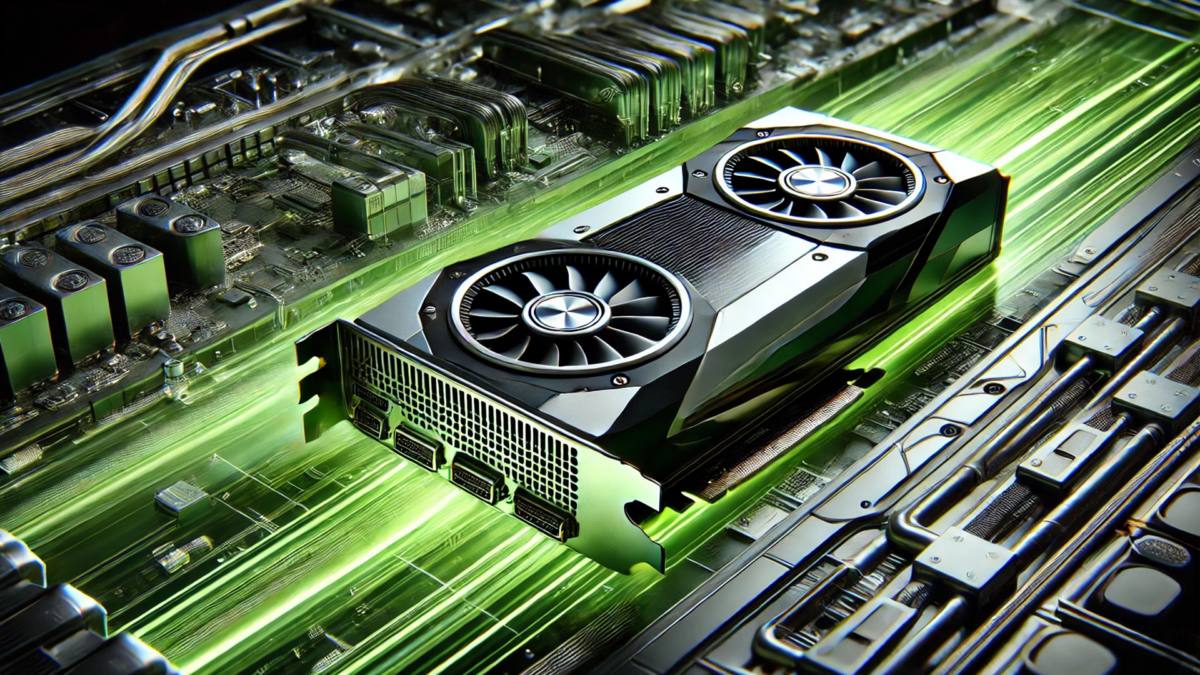NVIDIA GeForce RTX 5000: New generation promises massive performance boost

The upcoming generation of NVIDIA GeForce RTX 5000 graphics cards is expected to bring significant performance jumps and technical innovations. Early rumors suggest up to 70 percent more performance and clock speeds beyond 3 GHz for the flagship model.
NVIDIA's next generation of graphics cards could be particularly interesting for VR enthusiasts. The significantly increased computing power and faster graphics memory promise smoother frame rates and higher resolutions in virtual reality applications. This could lead to a more immersive VR experience with less motion sickness.
According to current rumors, NVIDIA plans to unveil the new RTX 5000 graphics cards in early 2025 at CES. NVIDIA CEO Jensen Huang is expected to open the show with his own keynote, where the reveal of the new GPU generation is anticipated.
GeForce RTX 5090: The new glagship
The next generation of NVIDIA GeForce RTX graphics cards, codenamed “Blackwell,” is slowly taking shape. According to current rumors and leaks, the new flagship GPU RTX 5090 could outperform its predecessor by up to 70 percent.
The RTX 5090 chip is said to be based on the GB202 graphics chip and feature 21,760 shader units. In comparison, the current RTX 4090 has 16,384 shaders. The rumored clock speeds are particularly impressive — the base clock is said to be around 2.9 GHz, which would allow for a boost clock of over 3 GHz.
The RTX 5090 is expected to come with 32 GB of GDDR7 VRAM and a 512-bit wide memory interface. The TDP is said to be 500 watts, an increase of 50 watts over the RTX 4090.
GeForce RTX 5080: The strong mid-range competitor
The RTX 5080 is said to be based on the GB203 chip and feature 10,752 shader units. According to rumors, it will be equipped with 16 GB of GDDR7 memory and a 256-bit memory interface. Interestingly, the GDDR7 memory of the RTX 5080 is said to be clocked slightly faster at 32 Gbps than the RTX 5090. The TDP is stated at 400 watts, an increase of 30 watts over the RTX 4080.
Experts expect the RTX 5080 to potentially match the performance of the current RTX 4090. This would mean a significant improvement in the price-performance ratio in this segment. The price of the RTX 5080 is expected to be over $1,000.
GeForce RTX 5070: Powerful entry into the new generation
Information on the RTX 5070 is still scarce. It's said to be based on the GB205 chip and feature 6,400 shader units. The memory configuration is expected to be 12 GB of GDDR7 with a 192-bit interface. The TDP is stated at 250 watts, an increase of 50 watts over its predecessor.
Despite having fewer shaders compared to the RTX 4070 Ti (7,680 shaders), the RTX 5070 could offer significantly better performance thanks to the new architecture and higher clock speeds. The price is expected to be around $600, similar to the introduction of the RTX 4070. It remains to be seen whether 12 GB of memory will be sufficient for future games.
Massive performance boost and technical innovations across all models
These are the expected features of the RTX 5000 series:
- Significantly more compute units: The RTX 5090 is said to have 21,760 shaders, the RTX 5080 10,752, and the RTX 5070 6,400 shaders.
- Record-breaking clock speeds: With a base clock of almost 2.9 GHz and possible boost clocks beyond the 3 GHz mark for the RTX 5090, NVIDIA is setting new standards.
- Faster graphics memory: The use of GDDR7 VRAM promises significantly higher memory bandwidth across all models.
- Improved manufacturing: The “4NP” process is expected to increase efficiency but can't fully compensate for the increased power consumption.
- New power connectors: All models are expected to feature the 12V-2x6 power connector.
- DisplayPort 2.1a: The new generation supports the latest DisplayPort standard with full 80 Gbps bandwidth.
While the enormous performance increase sounds impressive, the question arises as to the actual benefit for gamers. The current RTX 4090 already offers more than enough performance in most games. Only in particularly demanding scenarios such as 4K gaming with ray tracing or in virtual reality could the additional reserves of the new generation come into play.
Note: Links to online stores in articles can be so-called affiliate links. If you buy through this link, MIXED receives a commission from the provider. For you the price does not change.